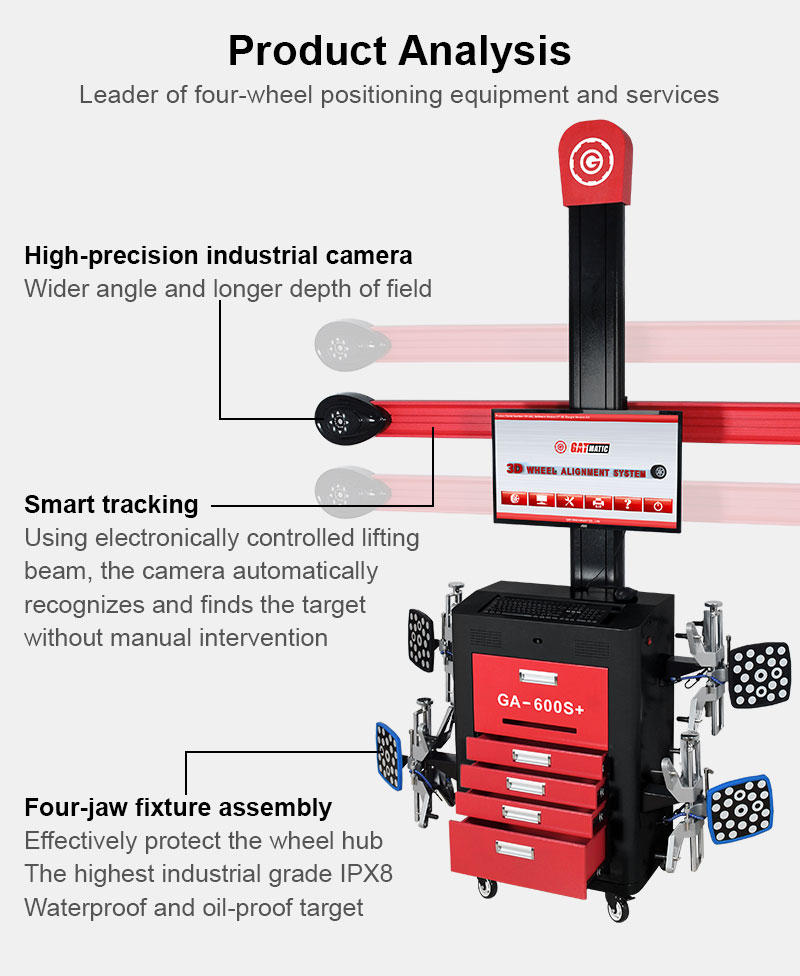What is a four-wheel alignment?
I. Introduction
Four-wheel alignment is a crucial aspect of vehicle maintenance that ensures all four wheels are positioned correctly relative to each other and the road. This process is vital for optimal vehicle performance, safety, and tire longevity. By understanding what four-wheel alignment entails, vehicle owners can appreciate its importance and recognize when it’s time for an adjustment.
II. Understanding Wheel Alignment
Wheel alignment refers to the adjustment of a vehicle’s suspension system, which connects the vehicle to its wheels. Proper alignment ensures that the wheels are perpendicular to the ground and parallel to each other. The key angles involved in wheel alignment include:
- Caster: This angle refers to the steering axis’s tilt from vertical, influencing steering stability and cornering.
- Toe: This measures how much the tires point inward or outward when viewed from above. Proper toe alignment is critical for straight-line stability.
- Camber: This angle indicates the tilt of the tires—whether they lean inward or outward when viewed from the front. Correct camber helps distribute weight evenly across the tire surface.
III. Differences Between Two-Wheel and Four-Wheel Alignment
There are two primary types of wheel alignment: two-wheel alignment and four-wheel alignment.
- Two-Wheel Alignment focuses on adjusting only the front wheels, commonly referred to as front-end alignment. This process primarily addresses adjustments made to the front suspension and steering components.
- Four-Wheel Alignment, on the other hand, involves a comprehensive adjustment of both front and rear wheels. This type of alignment is particularly necessary for vehicles with independent suspensions on all four wheels, ensuring that all tires maintain optimal contact with the road.
IV. The Process of Four-Wheel Alignment
Performing a four-wheel alignment involves several steps that require specialized equipment and expertise:
- Preparation: The technician locks the steering wheel in place and prepares the vehicle for measurement.
- Measurement: Using advanced alignment machines, the technician measures the angles of each wheel.
- Adjustment of Rear Wheels: The technician first adjusts the rear wheel angles, focusing on camber and toe settings to ensure proper positioning.
- Adjustment of Front Wheels: Next, adjustments are made to the front wheels, including caster, camber, and toe settings.
The expertise of a professional technician is essential in this process, as precise adjustments can significantly impact vehicle handling and performance.
V. Benefits of Four-Wheel Alignment
The benefits of four-wheel alignment are numerous:
- Enhanced Vehicle Handling: Properly aligned wheels improve steering response and overall handling, making driving safer and more enjoyable.
- Reduced Tire Wear: Misalignment can lead to uneven tire wear, causing tires to wear out prematurely. Regular alignments help ensure even wear across all tires, extending their lifespan.
- Improved Fuel Efficiency: When wheels are aligned correctly, rolling resistance decreases, leading to better fuel economy.
VI. When to Get a Four-Wheel Alignment
Regular checks for wheel alignment should be part of routine vehicle maintenance. It’s particularly important to have an alignment performed after hitting a pothole or curb or if you notice any signs of misalignment:
- The steering wheel is off-center when driving straight.
- The vehicle pulls to one side while driving.
- Uneven tire wear patterns appear on your tires.
VII. Conclusion
In conclusion, four-wheel alignment is an essential maintenance procedure that significantly impacts vehicle performance, safety, and tire longevity. By understanding its importance and recognizing when it’s time for an adjustment, vehicle owners can ensure their cars operate smoothly and efficiently on the road. Regular alignments not only enhance driving experience but also contribute to long-term savings on tire replacement and fuel costs.
FAQs
1. What is a four-wheel alignment?
A four-wheel alignment is a service that adjusts the angles of all four wheels to ensure they are aligned with each other and the vehicle’s centerline. This process helps improve handling, tire wear, and overall vehicle performance.
2. How is a four-wheel alignment performed?
The alignment process involves measuring the angles of the wheels using specialized equipment. Technicians adjust the camber, caster, and toe of each wheel based on the manufacturer’s specifications. The steering wheel is also checked to ensure it is centered, followed by a test drive to confirm proper alignment13.
3. Is four-wheel alignment necessary for all vehicles?
Not all vehicles require a four-wheel alignment. However, most modern cars and many SUVs have adjustable rear suspensions and should undergo this service to prevent uneven tire wear and ensure optimal handling.
4. What are the signs that my vehicle needs a four-wheel alignment?
Common indicators include:
- The steering wheel is off-center when driving straight.
- The vehicle pulls to one side.
- Uneven tire wear patterns on your tires.
- A noticeable change in handling or steering response.
5. How often should I get a four-wheel alignment?w
It’s recommended to have your alignment checked at least once a year or whenever you notice signs of misalignment. Additionally, alignments should be performed after hitting a significant pothole or curb.
6. Does misalignment affect fuel efficiency?
Yes, misaligned wheels can lead to increased rolling resistance, which in turn can decrease fuel efficiency. Properly aligned wheels reduce friction and improve gas mileage.
7. What is the difference between wheel alignment and tire balancing?
Wheel alignment involves adjusting the angles of the wheels, while tire balancing ensures that the weight of the tire and wheel assembly is evenly distributed around the entire unit. Both services are essential but serve different purposes.
Describe Your Needs In Detail!
We will carefully evaluate your needs and give professional solutions.




